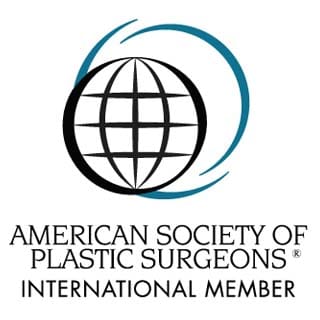
A lot of surgeons create dermal flaps (dermoglandular flaps, dermal fibrous flaps) into the targeted area where they can add more projection and stitch back the tissue. However, other surgical techniques have been developed as well.
Furthermore, here are some details about the inverted nipple correction surgery types.
Before the surgery, an anaesthetist will administer local anaesthesia, and the patient will be sedated throughout the surgery. An incision will be made just around the base of the nipple on the areola skin. The tissue of the nipple and entire areola skin is lifted from the breast, but still connected to it and stitched into a new, projecting shape. Post-operative nipple height is adjusted accordingly.
This simple technique uses a “purse-string” suture style of stitches. The circular shape of the scar around the nipple tissue will increase the nipple projection. Medicated gauze is then applied to the nipple base.
This is a more common procedure and may even be necessary in more difficult cases. Local anaesthesia and sedation will be administered for the cosmetic procedure.
For this surgical technique, an incision is made at the nipple base, and shorted milk ducts are detached. This will allow a more *natural-looking projection of the nipple. Post-operative nipple height varies. The incision is then stitched up, and medicated gauze is applied to the area.
The procedure for correcting an inverted nipple in Singapore will take about one to two hours, depending on the technique used and the anatomy of the patient.
Post-procedure recovery takes about a week, but patients may be back at work just a few days after the treatment. Like every surgery, strenuous activity should be avoided for the first week or two. Patients could experience sore nipples, as well as some form of bruising or swelling in the treatment area, which will resolve on its own. Sometimes nipple sensation is decreased for a while.
For full recovery, patients should wait at least four weeks. As a whole, the process is not strenuous, and there is not a lot of discomfort post-op. However, this varies from patient to patient.
Nipple eversion is believed to be a long-lasting process with high patient satisfaction rates. Scarring following inverted nipple surgery is minimal and barely visible. In rare cases, there may be asymmetry of the nipples or changes in nipple sensitivity and nipple necrosis. *To ensure good results, one should look for a certified surgeon and good medical advice.
An inverted or retracted nipple is a variation of the nipple type. It is pulled inward instead of protruding from the breast tissue. Medically known as nipple retraction or nipple inversion, this is either a pre-existing condition (congenital nipple inversion) or an acquired one (it develops later in life). Congenital nipple inversion is harmless in nature; however, it can result in the individual’s lack of self-esteem and overall confidence.
This particular condition can be fixed with a surgical treatment called inverted nipple repair/correction. In short, it is a surgical procedure where the patient is given local anaesthesia or sedation, especially if combined with other cosmetic treatments. Nipple eversion lasts a long time.

For many years, there has been a problem of inverted nipples for some men and women. The overpowering force pulling on nipples from underneath causes the inversion. Hence, the most common cause is having too much or too little connective tissue in the nipple. On that note, congenital inversions are relatively common. Another thing that may undermine proper projection is the short lactiferous ducts.
There are three levels of inverted nipples:
What are the problems associated with inverted nipples?
Flat nipples can cause a few problems, such as affecting an individual’s confidence, and for some women, it affects them by the inability to breastfeed (typically because of a moderate degree of fibrosis in the milk ducts). The condition could inflict inflammation and cause sore nipples.
The flat nipple type is caused by the following:

It should be noted that the nipple retraction treatment depends largely on the degree of inversion. Nipple formers, nipple retractors, nipple shield, and breast shells can be employed to make breastfeeding possible. However, they are temporary solutions.
For some women, a breast pump is of great help when it comes down to breastfeeding. The role of nipple formers, breast shells, and nipple shield is to create gentle pressure on the areolar skin so that the inverted nipple begins pointing outwards. In addition, nipple piercing might be performed to draw out the flat nipples.
Having said that, severe inversion of the nipple does not respond well to these options. Instead of using special suction devices that help the nipples stay erect for long periods of time, patients can undergo cosmetic surgery with partial preservation of breast milk ducts or with detached milk ducts. Internal sutures are typically used, but sutures along the edge of the areola tissue are also common. The latter is called a “purse-string” suture.
It goes without saying that patients should have one or two inverted nipples to qualify for surgical procedures of this kind. With that, pregnant women are not allowed to have surgical treatment until they give birth and stop breastfeeding (if they are able to do so). It is important that the individuals be in good overall health.
Surgical correction of nipple inversion is perfect for people who:
Monday – Friday: 09:00am – 06:00pm
Saturday: 09:00am – 02:00pm
Sun and PH: Closed
(Strictly by appointment only)

Copyright ⓒ Shens Clinic | Privacy Policy | Terms and Conditions .